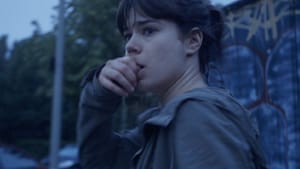Stay in the Loop
BSR publishes on a weekly schedule, with an email newsletter every Wednesday and Thursday morning. There’s no paywall, and subscribing is always free.
More than a one-shot wonder
Sebastian Schipper's 'Victoria'

Filmmaking revolves around the cut. It’s how a director controls what we see and how we see it — the way that different shots are framed, sequenced, and spliced together determines what a film is. So it’s not surprising that any film that eschews the cut draws a good deal of critical attention.
Last year, Birdman was cinema’s one-shot wonder; this year, it’s German-made Victoria, which has predictably been met with a barrage of comparisons to the former. Though not quite groundless, such comparisons are superficial and misleading: Beyond a lack of (visible) cuts, the two films have little in common. Birdman consists of numerous scenes edited together to appear as one continuous shot; Victoria was literally filmed in a single take. Birdman is regularly injected with visual flights of fancy and thematic loftiness; Victoria traffics in a gritty and exuberant realism. Birdman’s cinematography is, above all, an aesthetic; Victoria’s single-take method fundamentally shapes how its story is told.
Victoria opens with the title character (Laia Costa) out for the night in Berlin, dancing alone in a club and attempting to flirt with a bartender. We learn that she’s from Madrid, speaks no German (she communicates almost exclusively in fluent, if imperfect, English), and has been in Berlin for just a few months. She’s friendless, and, we presume, somewhat lonely. As she leaves, she befriends a rowdy group of self-identified “real Berlin guys” who promise to give her an “authentic” tour of their city. She joins them and — whether out of boredom, a desire to continue her flirtations with the goofy-yet-charming Sonne (Frederick Lau), or some combination of both — stays with them as their behavior drifts from boisterous to criminal to hints that something far more dangerous may be unfolding.
Letting things happen
In the hands of director Sebastian Schipper and cinematographer Sturla Brandth Grøvlen, Victoria doesn’t so much tell its story as let it happen: The camera doesn’t frame the onscreen action, but rather joins it, fly-on-the-wall style. We come to feel like an invisible, silent member of Victoria and Sonne’s posse, privy to certain conversations and events but by no means omniscient, our perspective strictly delimited by what can happen in the confines of a single take unfolding in real time. There is minimal room for backstory or exposition — we are given nothing more to understand the characters than what they give each other.
Nowhere is this truer than in the case of Victoria herself, who, despite her almost constant screen time, remains startlingly enigmatic throughout the film. Joking around with Sonne and the rest, she is playful and intelligent; constantly poking fun at their hapless bravado and drunken antics, she maintains a degree of sovereignty despite being more or less in their charge. We come to trust her and feel like we know her, only to have our — and quite possibly her own — understanding of who she is turned, in a series of snap decisions with outsize consequences, utterly on its head. Despite all the time the camera is trained on her, what she knows and what she wants become more and more obscure as the film progresses. Victoria goes from being the stable center around which the film’s world revolves to its rogue star, brilliant and, at times, terrifying. Even if certain aspects of her inscrutability seem less deliberate than sloppy — it’s never clear just how she falls for Sonne so rapidly — she’s still more than capable of carrying the emotional weight of the film, no small feat once the tension skyrockets after the halfway point.
Unceasingly exhilarating
Indeed, what makes Victoria’s use of the single-take technique so much more than a directorial gimmick is how it generates and maintains tension. Victoria, for its final hour and a half, is unceasingly exhilarating, the result of the strength of the story and the actors (Costa, in particular, being exceptional) as well as to the film’s literal inability to turn away, to grant us a reprieve. There can be no fade to black, no temporal leap forward or backward to safety, no moment during which the audience can let out its collective breath — any of which would require the use of a cut. Even during the film’s moments of relative tranquility — rides in cars or elevators, moments when the background noise fades out and music overlays the scene — the camera still keeps us trained on the faces of Sonne, Victoria, and the others, ensuring that we know, as they do, that this instant of joy or contentment cannot and will not last. It is during these instants that Victoria feels most sublime: we find ourselves caught between the precariousness of the current peace and the knowledge that, whatever follows, we will not be allowed to look away.
What, When, Where
Victoria. Sebastian Schipper directed. Cinematography by Sturla Brandth Grøvlen. The Ritz at the Bourse, 400 Ranstead Street, Philadelphia. Philadelphia area showtimes.
Sign up for our newsletter
All of the week's new articles, all in one place. Sign up for the free weekly BSR newsletters, and don't miss a conversation.
